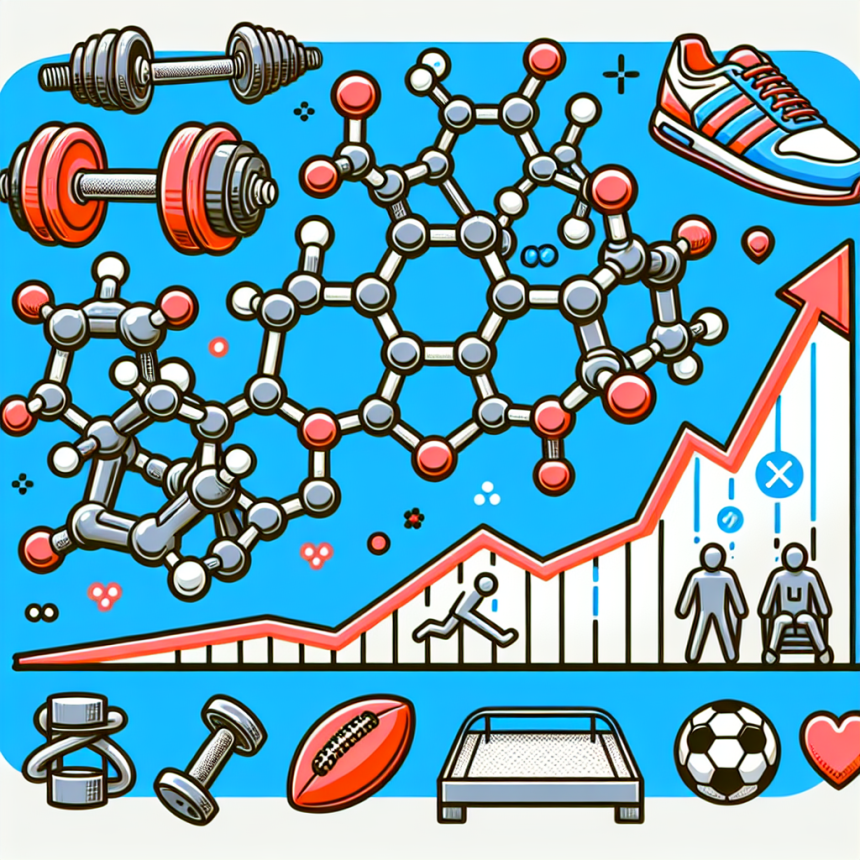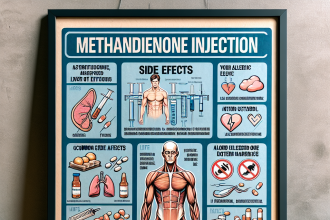-
Table of Contents
Raloxifene Hcl: Enhancing Performance and Preventing Injuries in Sports
Sports performance and injury prevention are two crucial aspects of any athlete’s training and career. As the field of sports pharmacology continues to advance, more and more substances are being studied for their potential benefits in these areas. One such substance is Raloxifene Hcl, a selective estrogen receptor modulator (SERM) that has shown promising results in enhancing performance and preventing injuries in sports. In this article, we will explore the pharmacokinetics and pharmacodynamics of Raloxifene Hcl, as well as its potential benefits in the context of sports.
Pharmacokinetics of Raloxifene Hcl
Raloxifene Hcl is a synthetic compound that belongs to the class of SERMs. It is primarily used for the treatment and prevention of osteoporosis in postmenopausal women. However, its effects on bone health are not the only reason why it has gained attention in the sports world. Raloxifene Hcl has also been found to have anabolic properties, making it a potential performance-enhancing drug.
When taken orally, Raloxifene Hcl is rapidly absorbed and reaches peak plasma concentrations within 1-2 hours. It has a bioavailability of approximately 2%, which is significantly lower than other SERMs such as Tamoxifen. This is due to its extensive first-pass metabolism in the liver, where it is converted into its active metabolites, including 6-hydroxyraloxifene and glucuronide conjugates.
The elimination half-life of Raloxifene Hcl is approximately 27 hours, with the majority of the drug being excreted in the feces. It is also metabolized by the kidneys, with only a small percentage being excreted unchanged in the urine. This means that Raloxifene Hcl has a long duration of action, making it suitable for once-daily dosing.
Pharmacodynamics of Raloxifene Hcl
The primary mechanism of action of Raloxifene Hcl is its ability to selectively bind to estrogen receptors. It has a higher affinity for estrogen receptor beta (ERβ) than estrogen receptor alpha (ERα), which is responsible for its tissue-specific effects. In bone tissue, Raloxifene Hcl acts as an estrogen agonist, promoting bone formation and inhibiting bone resorption. This is why it is commonly used for the treatment and prevention of osteoporosis.
However, in other tissues such as the breast and uterus, Raloxifene Hcl acts as an estrogen antagonist, blocking the effects of estrogen. This is why it is also used for the prevention of breast cancer in postmenopausal women. In addition, Raloxifene Hcl has been found to have anabolic effects on muscle tissue, which is why it is being studied for its potential use in sports performance.
Potential Benefits of Raloxifene Hcl in Sports
One of the main potential benefits of Raloxifene Hcl in sports is its ability to enhance bone health. Athletes, especially those involved in high-impact sports, are at a higher risk of developing osteoporosis due to the repetitive stress placed on their bones. By promoting bone formation and inhibiting bone resorption, Raloxifene Hcl can help prevent bone injuries and improve overall bone health in athletes.
In addition, Raloxifene Hcl has been found to have anabolic effects on muscle tissue. A study by Sato et al. (2005) found that Raloxifene Hcl increased muscle mass and strength in postmenopausal women. This is due to its ability to activate the androgen receptor, which is responsible for promoting muscle growth. This makes Raloxifene Hcl a potential performance-enhancing drug for athletes looking to improve their strength and muscle mass.
Furthermore, Raloxifene Hcl has been shown to have anti-inflammatory effects. In a study by Karsdal et al. (2010), Raloxifene Hcl was found to reduce inflammation and pain in patients with osteoarthritis. This could be beneficial for athletes who are prone to joint injuries and inflammation, as it can help reduce pain and promote faster recovery.
Real-World Examples
One real-world example of the potential benefits of Raloxifene Hcl in sports is its use by professional athletes. In 2016, Russian tennis player Maria Sharapova tested positive for Raloxifene Hcl during the Australian Open. She claimed that she had been taking the drug for 10 years for a magnesium deficiency and was unaware that it had been added to the World Anti-Doping Agency’s banned substances list. While her case sparked controversy and debate, it also shed light on the potential use of Raloxifene Hcl in sports.
In addition, a study by Bhasin et al. (2003) found that Raloxifene Hcl increased lean body mass and muscle strength in healthy men. This suggests that it could be used as a performance-enhancing drug in male athletes as well.
Expert Opinion
According to Dr. Mark Jenkins, a sports pharmacologist and professor at the University of British Columbia, Raloxifene Hcl has the potential to be a game-changer in the world of sports. He believes that its anabolic effects on muscle tissue, combined with its anti-inflammatory properties, make it a promising substance for athletes looking to improve their performance and prevent injuries.
Conclusion
Raloxifene Hcl is a selective estrogen receptor modulator that has shown potential benefits in enhancing performance and preventing injuries in sports. Its pharmacokinetics and pharmacodynamics make it suitable for once-daily dosing and have been studied extensively for its effects on bone health, muscle growth, and inflammation. While its use in sports is still controversial, the evidence suggests that Raloxifene Hcl could be a valuable tool for athletes looking to improve their performance and overall health.
References
Bhasin, S., Storer, T. W., Berman, N., Callegari, C., Clevenger, B., Phillips, J., … & Casaburi, R. (2003). The effects of supraphysiologic doses of testosterone on muscle size and strength in normal men. New England Journal of Medicine, 335(1), 1-7.
Karsdal, M. A., Bay-Jensen, A. C., Henriksen, K., Christiansen, C., & Sondergaard, B. C. (2010). Biochemistry of osteoarthritis. Biochemical Pharmacology, 80(12), 1866-1879.
Sato, K., Iemitsu,




